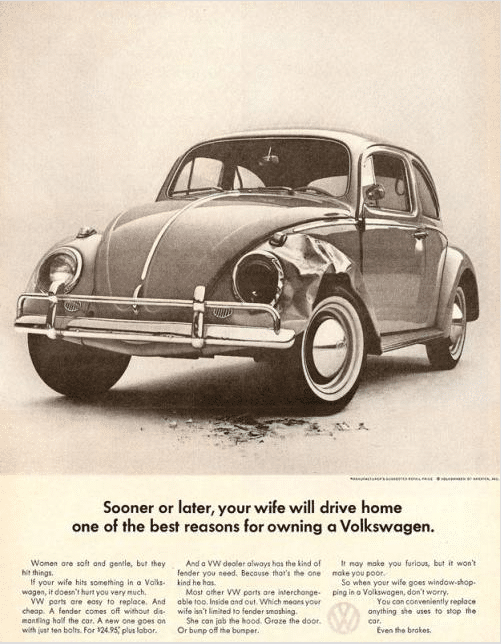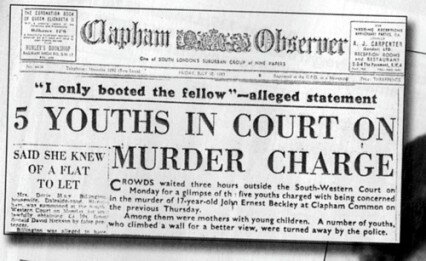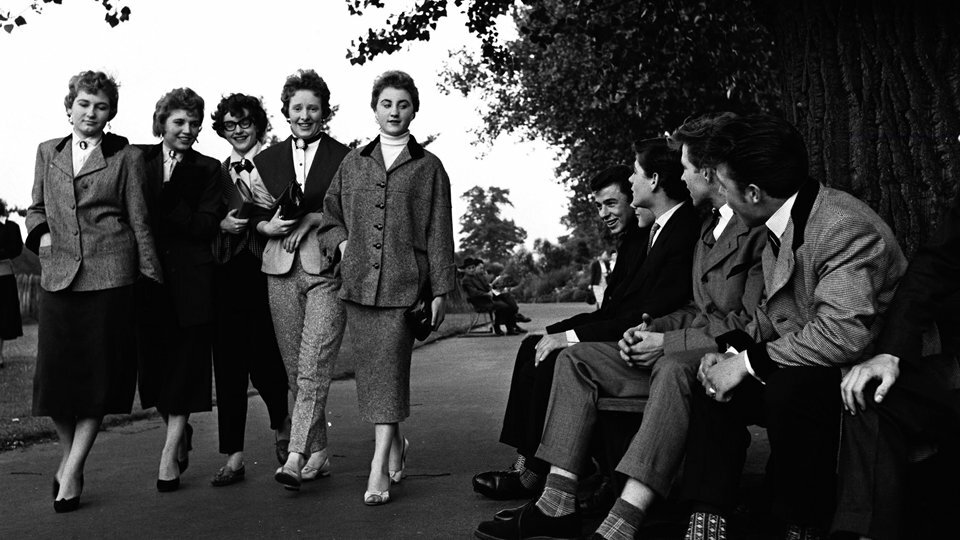
- The positioning, use of colour
The imagery in the advert is very simplistic, mainly used to capture attention and as a setup for the tagline. The car is clean and seemingly brand new aside from the damage, set at an angle so a viewer to see the car as a whole, allowing the advert to also function as an advert for the car. The broken headlight and body damage are placed at the centre of the image as the natural focus for the viewer's eye and evoke a sense of shock and discomfort at such a nice car being ruined, setting up for the explanation being that "your wife", a poor driver, has crashed it.
- The anchorage and use of text
Picture first to get attention, tagline punchline and explanation- "Sooner or later your wife will drive home one of the best reasons for owning a Volkswagen." "Drive home" has a double meaning, both that your wife will drive home a crashed car, but also "drive home" a point- that its good you own a Volkswagen since you can replace the parts. The assumption that women are bad drivers is exaggerated throughout the text, with quotes such as "...your wife isn't limited to fender smashing" // The most obviously misogynistic sentence is the final one of the advert, functioning as a summary. "So when your wife goes window-shopping... You can conveniently replace anything she uses to stop the car. Even the brakes." Firstly, there is the implication that women only leave the house to go shopping- or not even shopping, but simply to look at things she could be buying. This is also a play on words, with the implication of "window-shopping" also meaning she may have damaged the car window(s) and needs to replace it/them. Secondly, the fact you can "replace anything she uses to stop the car"- that women are such poor drivers they cant even stop a car without crashing into something.
- The values and ideology that is being presented:
- Patriarchal - The woman being discussed is always referred to as being owned by the husband- "...your wife" , as well as the assumption that men are superior to women.
- Otherness - The woman in the relationship is implied to be below her husband, as she is worse at driving (and an object to patronise). This creates a sense of otherness as there is an apparent dichotomy between the two sexes.
- Capitalist/Consumerist - The attraction of owning a good-looking, expensive car and keeping it in as-new condition with minimal difficulty, when in reality all you need from a car is for it to get from place to place.
- Selling a lifestyle - Owning a nice car that can be repaired easily and cheaply as well as being married without consequence ("It may make you furious, but it won't make you poor.").













